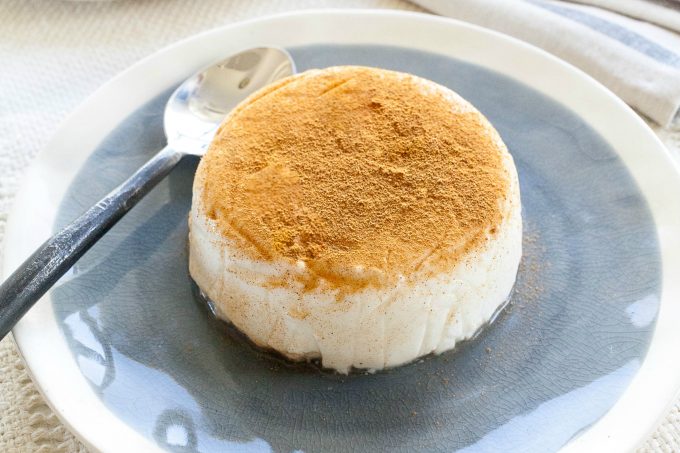The risk factors for developing chronic inflammation are quite varied.
Genetics
Genetics is thought to play a role in chronic inflammation, but it is difficult to provide specifics without looking at a particular diagnosed chronic disease. For example, with breast cancer, it is estimated that 5-10% of diagnosed individuals get the disease primarily due to genetic inheritance. Most people who inherit breast cancer have 2 specific abnormal genes that have been linked with the disease. But not everyone with the 2 abnormal genes gets breast cancer. And people without these genes can get breast cancer. Scientists believe many other factors are at play. What turns the underlying inflammation into a cancer diagnosis? Risks associated with the disease increase or decrease a person’s chances of getting it; ethnicity, hormonal and reproductive factors, weight and overall health, all could play a role.
It is interesting to note that countries with more of a “Western” influence have higher levels of chronic diseases such as diabetes. China, for example, has more levels of inflammation and more “Western” diseases than other “less Western” Asian groups.
Some countries and ethnicities may have higher incidences of a smoking population, another inflammatory inducer, increasing the risk for lung diseases. Diet in different countries and ethnicities will also influence inflammation rates.
Environment (the community one resides in, for example) and lifestyle choices may be influenced by genetics, thus impacting the risk for developing chronic inflammation. For example, if you look at obesity prevalence by race/ethnicity, you’ll see varying outcomes indicating certain ethnic subgroups have a higher prevalence of obesity. In a 2008 study done by the National Health and Nutrition Examination Survey, 51% of non-Hispanic black women aged 20 years or older were obese, compared to 33% of whites. If obesity is a pro-inflammatory inducer, by this study, non-Hispanic black women could be at greater risk for inflammation.
Age
In response to normal aging, there is an increase of inflammatory cytokines (destructive cell-signaling chemicals) that contribute to the progression of chronic inflammation and many degenerative diseases.
Older adults have consistently elevated levels of inflammation, even in healthy older individuals. This is likely due to cumulative oxidative damage and mitochondrial dysfunction, or may be due to other risk factors more associated with age such as increased body fat or reductions in sex hormones.
Scientists theorize that aged people may also lose the ability to “turn off” inflammatory reactions. This can also happen in younger people with bad health habits such as smoking.
Obesity
Fat tissue is an endocrine organ, storing and secreting hormones and affecting metabolism in the body. Obesity is when there is an over-accumulation of abdominal adipose and/or subcutaneous fat tissue. Adipose tissue is an active tissue in the regulation of the body’s physiological and pathological processes, including immunity and inflammation. Having a large waist measurement (at or above 35 inches for a woman and 40 inches for a man) means you likely have a systemic inflammation as well as potentially an insulin resistance problem.
Other obesity-related issues include: having high blood pressure (at or above 130/85 millimeters of mercury), high triglycerides (150mg/dL or above, as measured by a cholesterol blood test), and high levels of glucose (at or above 100 milligrams per deciliter after fasting). The American Heart Association states that these factors point to an inflammatory condition called metabolic syndrome, which is a common precursor of diabetes and heart disease.
Obese individuals are more likely to be eating a poor diet, and less likely to be exercising and sleeping well. These are all additional factors increasing the risk for inflammation.
When you are obese, your fats cells bulge and your body’s immune system sends white blood cells to the stressed area. It inflames the cells and over time that inflammation can make healthy cells resistant to insulin (the hormone that regulates blood sugar), which can then lead to diabetes. Scientists know that foods which dump an excess of sugar into your bloodstream are more likely to set off inflammation.
During 2009–2010, more than one-third of adults, or some 78 million people were found to be obese (defined as body mass index [BMI] ≥30 kg/m2) in the United States.
Obesity has been definitively linked to elevated levels of inflammatory blood markers such as C-reactive protein.
Diet
Diet is key to inflammation. A diet high in saturated fat is associated with higher inflammatory markers. Consuming high-sugar, high-carb, high-fat foods, or when you eat a lot of saturated and Trans fats, increases your inflammation risk.
The well-known Attica study from the University of Athens that linked the Mediterranean diet to a lower risk of heart disease found that this diet also reduces inflammation.
90% of Americans are thought to have sodium intake that is too high, likely due to the amount of processed and packaged foods eaten. This increases the risk of high blood pressure and inflammation.
In a 2011 study, 38% of adolescents and 23% of adults said they ate vegetables less than once a day. The “Western” diet typically does not contain enough nutrient-dense foods, and may consist of a much larger amount of pro-inflammatory foods, as well serving sizes that are too large.
Stress
Inflammatory activity increases under chronic stress. Stress is also associated with decreased sleep and increased body mass (stimulated by the release of the stress hormone, cortisol), both of which are causes of inflammation.
Low sex hormones
Along with many other chores, the body’s sex hormones also modulate the immune/inflammatory response. Experiments in cell cultures have demonstrated that testosterone and estrogen can repress the production and secretion of several pro-inflammatory markers. So as the body’s sex hormone levels drop (due, for example, to chronic stress) it results in inflammation.
Smoking
Cigarette smoke contains several inducers of inflammation. Chronic smoking increases production of several pro-inflammatory cytokines, while simultaneously reducing production of anti-inflammatory molecules. More than 42 million adults said they currently smoked cigarettes in a 2012 study.
Sleep disorders
Scientists at Emory University School of Medicine in Atlanta, Georgia, studied the effect of sleep deprivation on inflammation and the risk of developing heart disease, and found a link. Sleep deprivation or poor sleep quality raised inflammation. Other studies have linked a lack of sleep to raising cortisol levels, obesity, metabolic disorders and a pro-inflammatory response.
Even short-term sleep reduction adversely affects inflammatory levels. In one study, modest sleep deprivation caused a 40-60% average increase in pro-inflammatory markers in men and women.
Lack of exercise
In a 2011 study it was found that more than half of adults aged 18 years or older did not meet the recommendations for physical activity and aerobic exercise. Another study done by Mark Hamer, PhD at University College London found that a moderate level of exercise – about 20 minutes a day – lowered the markers of inflammation by at least 12%. It is thought that when you exercise your adipose and muscle tissue release cytokines into the blood stream, reducing inflammation. Hamer also found it was never too late to gain the benefit of exercise.
Periodontal disease
Gum inflammation produces a systemic inflammatory response that may cause inflammation of several other systems throughout the body, such as the cardiovascular system.











